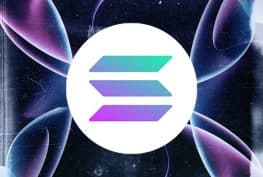Fidelity Investments, one of the largest asset managers in the United States, is close to launching its own stablecoin pegged to the US dollar. This development aligns with a more favorable regulatory environment for cryptocurrencies in the US, particularly during the Trump administration.
**Fidelity Testing US Dollar-Pegged Stablecoin**
According to a recent report by the Financial Times, the financial giant is in the final stages of testing the stablecoin through its digital assets division, Fidelity Digital Assets. Expected to debut by the end of May, this stablecoin is part of Fidelity’s broader strategy to expand into the cryptocurrency sector. Besides the stablecoin, Fidelity has recently filed with the US Securities and Exchange Commission (SEC) to introduce an Ethereum-based “OnChain” share class for its Treasury Digital Fund, which primarily invests in US Treasury securities.
This initiative from Fidelity comes as the stablecoin market, currently valued at around $235 billion, continues to expand, with major players like Tether and Circle dominating the space. The presence of traditional financial firms in this sector is increasing, driven by enhanced regulatory clarity around stablecoin issuance.
**Stablecoin Innovation Amid Crypto Regulatory Shift**
Fidelity’s participation underscores a broader trend of institutional adoption of blockchain-based financial products, similar to PayPal’s introduction of its own stablecoin, PayPal USD (PYUSD), in 2023. Following President Donald Trump’s election, many US financial institutions have begun exploring cryptocurrency-based products due to anticipated policy shifts. For instance, Custodia and Vantage Bank recently introduced the country’s first-ever bank-issued stablecoin, leveraging the open Ethereum blockchain.
World Liberty Financial (WLFI), a DeFi project supported by former President Donald Trump, has launched a stablecoin called USD1, backed by short-term US government treasuries, dollar deposits, and cash equivalents. Initially, USD1 tokens will be available on both the Ethereum and Binance networks, with future plans to extend to additional blockchains. Each USD1 token is designed to maintain a $1 value, supported by a reserve portfolio audited by an independent third party.
Follow us for more updates on Twitter!




